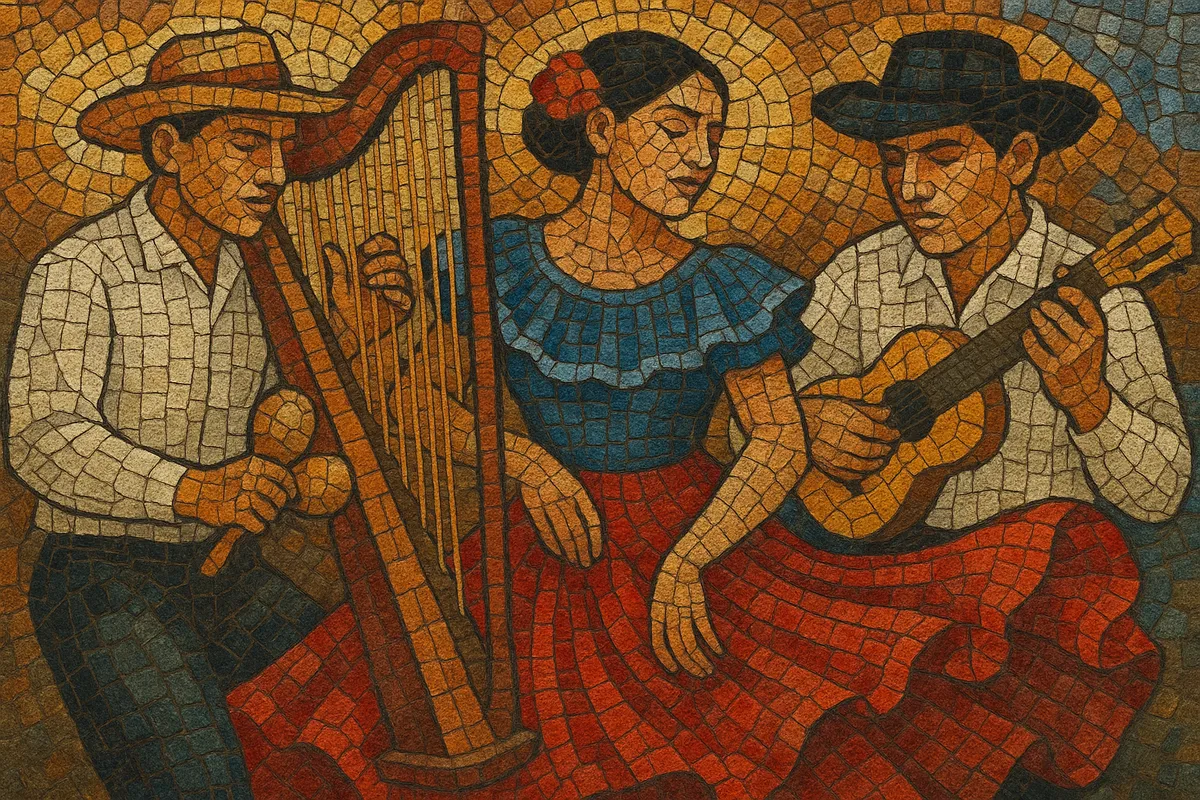Joropo is a fast, virtuosic music and dance tradition from the Llanos (plains) of Venezuela and eastern Colombia. It blends Iberian song forms and harmony with Afro-Indigenous rhythmic practices, centered on the llanera harp (arpa llanera), cuatro (small four‑string guitar), and maracas.
Rhythmically, joropo is famous for sesquiáltera (the overlay of 3/4 and 6/8), creating propulsive hemiolas that drive dance. The style includes instrumental pieces called golpes and more lyrical songs called pasajes, and it features sung décima-style coplas and improvised contrapunteo (poetic duels). Dancers execute intricate zapateo footwork that mirrors the music’s cross‑rhythms.
Joropo arose in the Venezuelan Llanos during the late colonial period, with roots in Spanish baroque dance and song (fandango, jota, and copla) that blended with African rhythmic sensibilities and Indigenous performance practices. The llanera harp, cuatro, and maracas ensemble crystallized as a rural party music for community gatherings known as “joropos,” a word that came to designate both the festivity and the style.
By the 19th century, regional variants emerged: joropo llanero (the plains style with harp at the center), joropo tuyero (from central Venezuela with virtuosic cuatro leading), joropo oriental (eastern, with bandola oriental), and joropo andino (Andean-tinged). Repertoires coalesced into golpes (up‑tempo, often cyclic harmonic frameworks such as pajarillo, seis por derecho, and quirpa) and pasajes (more lyrical, narrative songs). The practice of contrapunteo—improvised poetic duels—became a hallmark of the genre.
In the early–mid 20th century, commercial recordings, radio, and urban dance halls expanded joropo’s reach. Iconic pieces like “Alma Llanera” (1914) popularized the sound as a de facto Venezuelan anthem. Virtuoso harpists and singer‑poets professionalized the tradition, while ensembles standardized instrumental roles. Cross‑border exchange with Colombia further cemented a shared llanero identity.
From the late 20th century onward, artists modernized joropo with concert arrangements, collaborations in Latin jazz and world fusion, and international touring ensembles. Contemporary groups maintain rural dance practices while experimenting with expanded instrumentation, sophisticated harmony, and stage presentation, keeping the tradition vibrant across Venezuela, Colombia, and global stages.


